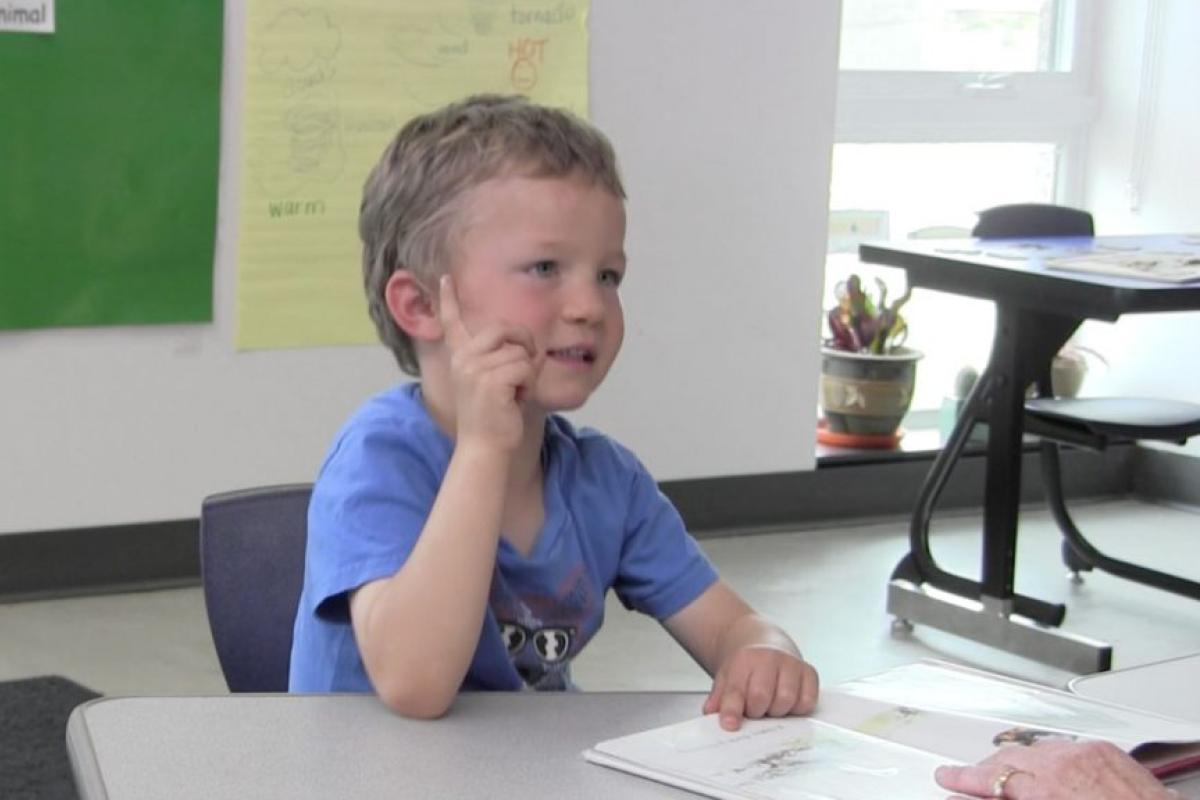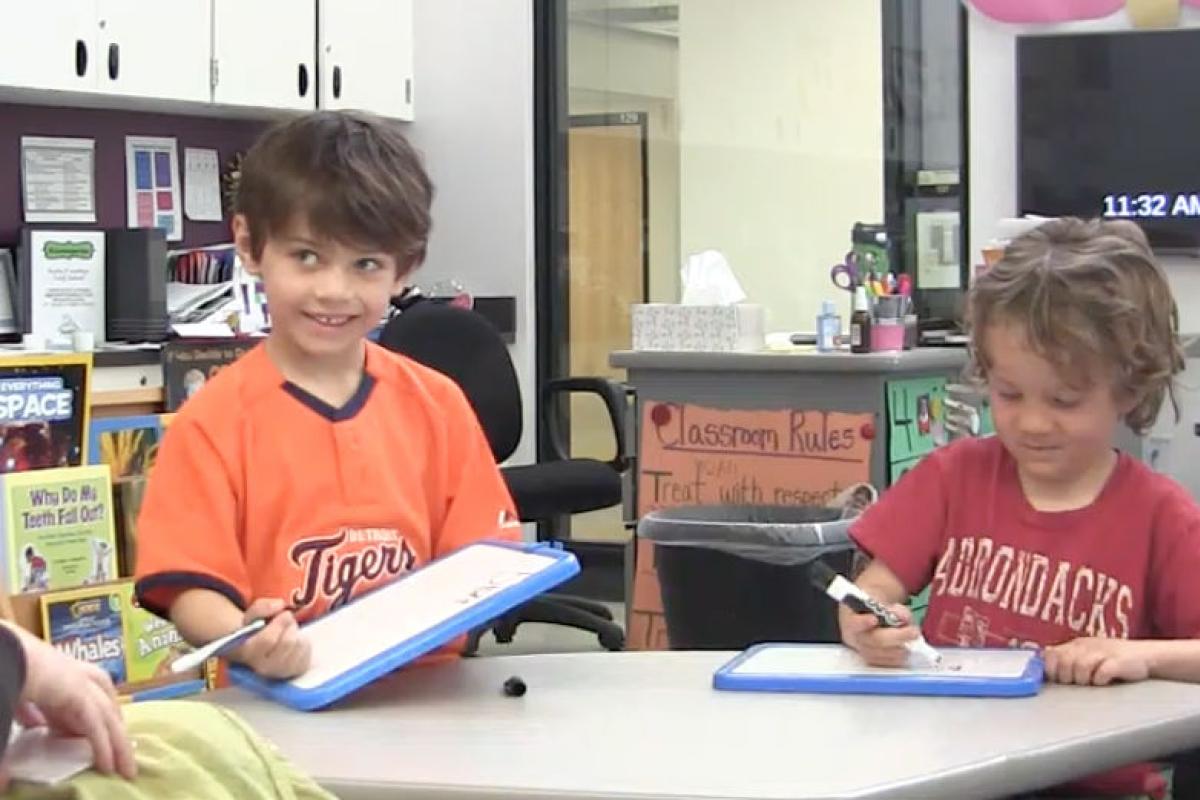Our Research
Utilizing Fingerspelling to Teach Reading
Currently, teachers of deaf and hard of hearing students range considerably in their use of fingerspelling with their students. In general, many teachers are underutilizing fingerspelling as a tool to enhance reading skills. Our data shows that fingerspelling can be used in reading, much like phonological awareness is used with hearing children. Research clearly shows that hearing children need to learn to break words down into individual sounds and learn to connect speech sounds to graphemes. Our approach is somewhat similar; in that we use fingerspelling to help a child develop an understanding of a printed word as both individual letters and patterns. For example, the words “make” and “take” can be divided into segments with a unique first letter and a common rime “ake”. We call these the sublexical units of the word.
Research has shown that there is a strong relationship between fingerspelling and recognition of printed English words (Schick, B., Lederberg, A., Webb, M-Y, July 2014)
Our exciting research findings show that fingerspelling is highly related to literacy for Deaf and Hard of Hearing children.
Our program is designed using evidence-based research
In our initital study the CLAD team gathered comprehensive language and literacy data on 290 deaf and hard of hearing children from schools around the U.S., and from a variety of classes, including:
- Local schools
- Charter schools
- Residential or day schools for the deaf
- Private schools.
Results from a Focused Study
In 2014-2015, research teachers taught our fingerspelling program in two schools; Rocky Mountain Deaf School, and the Atlanta Area School for the Deaf. There were 14 students in K-2nd grade involved in the study. The teachers used an iterative design approach. Teachers provided feedback, and the team made modifications throughout the year to further develop the program.
The data from this fingerspelling study clearly indicated that there was a significant difference between the pre and post assessments for both Fingerspelling Production and Print Recognition.
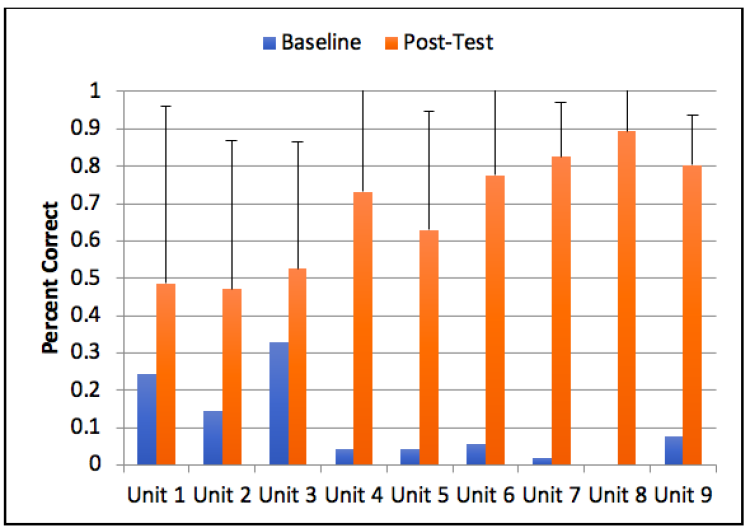
Fingerspelling - Struggling Readers
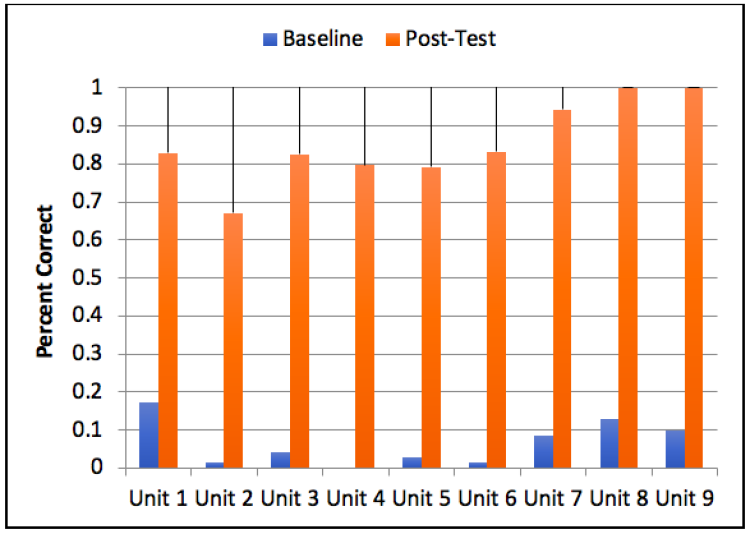
Fingerspelling - Good Readers
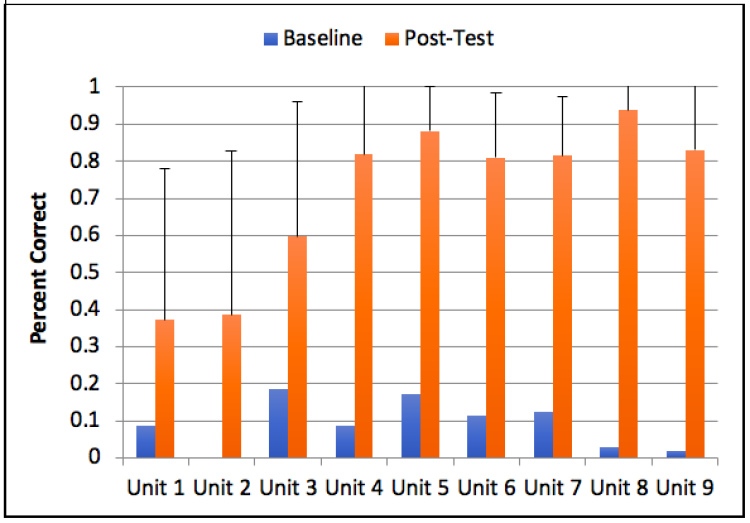
Print Recognition - Struggling Readers
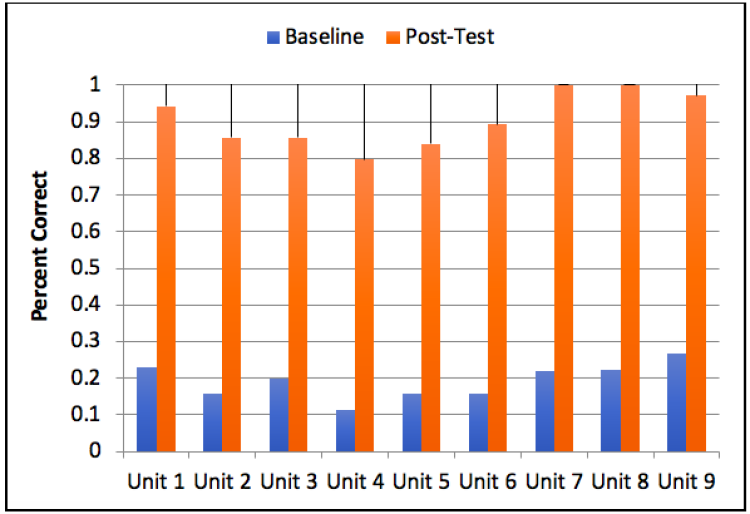
Print Recognition - Good Readers
We separated student outcomes into two groups, using results from the Woodcock Johnson Letter Word ID subtest:
Group 1: Good Readers – Students with a standard score of 85 or above, considered typically developing.
Group 2: Struggling Readers – Students with a standard score below 85, considered as below average.
The data were exciting for both groups! Good Readers did well at learning to fingerspell and identify the printed target words almost immediately. Although the Struggling Readers started out by struggling to learn the patterns – they were learning as well as the students in the Good Readers group in later units.
Fingerspelling: The Bridge to Reading Comprehension
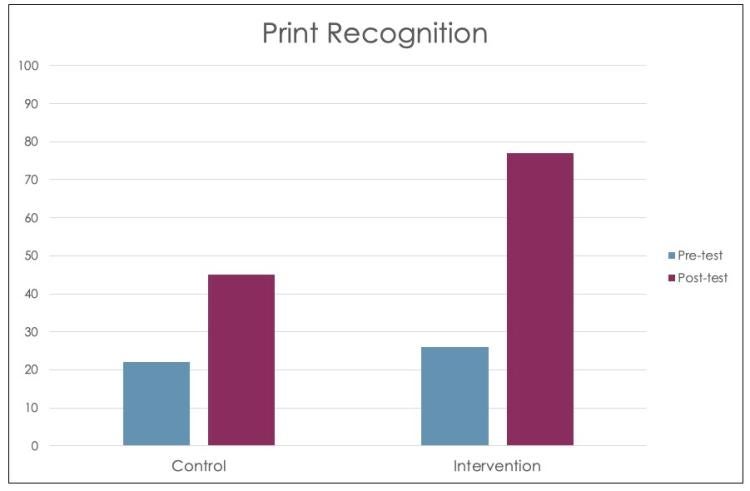
Intervention Group recognized 77% of target print words
Based on the positive results of the small study, we implemented a randomized contolled trial to further investigate the effectiveness of the program. The study included 17 schools and programs and over 45 teachers. We provided initial training and ongoing mentoring throughout the year. The results of that study showed that a curriculum designed to develop fingespelling phonological awareness skills results in better fingerspelling and better print recognition. It also showed that struggling readers showed more improvement through the year.
During the 2017-18 school year, we included a Reading Comprehension component for all classrooms who were part of the initial study both in the control or intervention groups. The reading component is designed to complement the fingerspelling program and to provide additional reading opportunities using the target words. The reading component provides a pathway for understanding connected English text through repeated opportunities to read the target words in meaningful sentences and original stories.
There is evidence that fingerspelling may provide a pathway to decoding words and strengthening print recognition by building phonological awareness and providing a one to one direct relationship between fingerspelled words and printed English words.
A Thanks to All Participating Schools
Thank you to all the schools and programs that participated in the randomized control trial of the Fingerspelling Our Way to Reading program during the 2016-17 school year and the continuation of the study during the 2017-18 school year which included the Fingerspelling Program and the Reading Comprehension program.


